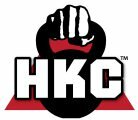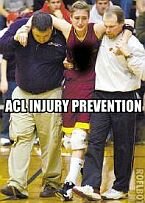Tennis Elbow
This condition plagues not only racquet players, but golfers, bowlers, mechanics or anyone who uses frequent rotary movements of the forearm. Tennis elbow is caused by excessive strain on the muscles of the forearm which run from the wrist to the elbow. These muscles produce forward and backward movement at the wrist.
There are two types of tennis elbow commonly referred to as backhand and forehand tennis elbow. Backhand tennis elbow is by far the most prevalent and is common in novice players. The backhand stroke stresses the muscles that straighten or extend the wrist and fingers. They attach on the outer side of the elbow and are called your wrist extensors. Pain usually begins at the outer bony prominence at the elbow (lateral epicondyle) and can spread all the way down the forearm.
Forehand tennis elbow or golfer's elbow is common in professional tennis players. This comes from the tremendous snap in the forehand swing or serve. This movement strains the muscles that bend the wrist foreword (flexion) and allow you to make a fist. These muscles attach at the bony prominence on the inside of the elbow (medial epicondyle) and are called your wrist flexors. Pain begins in this area and may spread down the forearm.
Hitting a tennis ball traveling at thirty miles per hour is equal to lifting a fifty pound weight. Multiply this by hitting the ball dozens of times each set and you can see why this injury is so common. The force of hitting the ball travels from the racquet to the forearm and ends up at the elbow tendon. Over time this causes a small rip or tear in the muscle/tendon. If this tear is allowed to recur every few days it becomes inflamed and proper healing is interrupted. This continued use propagates the tear and symptoms worsen. Small areas of scar tissue develop called trigger points. Even every day activities like opening a car door or lifting that morning cup of coffee interrupt normal healing. Also remember, the older you are, the slower the healing process. This means that more rest and rehabilitation is needed.
Here are several hints for tennis players: Avoid using too heavy a racquet as the heavier the racquet, the more stress on the elbow. Get your grip size evaluated by a pro. If your grip is too big the racquet will be held insecurely and cause excess shock at the elbow. Playing on cement is hard on the elbow because the ball bounces off with greater force. Change your tennis balls frequently as a heavy ball also causes greater force at the elbow. Too much tension on the strings causes a greater force to be transmitted to the elbow.
The first part of treatment is proper evaluation of the injury. Initially you must rest and relieve the inflammation. Always ice the area immediately after you feel pain and stop playing! Too many people continue to play only to pay the next day.
Techniques like Active Release Techniques® and Graston Technique break up the scar tissue and allows the area to heal. Ultrasound, a deep heat, allows blood to flow to the injured area to get rid of the scar tissue and supply nutrients for healing. Adjustments to the neck, shoulder, elbow and hand are usually needed to restore proper joint motion. A proper strength and stretching program is essential to restoring the area. This includes wrist curls (pulling a weight palm up), wrist extensions (extending the wrist from a palm down position) and stretching of the wrist flexors and extensors.
|
The Ultimate Nutritional Lie Detector Test LEARN MORE 
|
Kettlebell Rehab

Click Here
To See How Kettlebells will transform your body!
Vortex Rehab

Click Here
To See How This
Revolutionary Machine
Can Help You!
Partner / Support

Loans up to 3 months - fast cash advances for up to 90 days and up to $5,000!


















